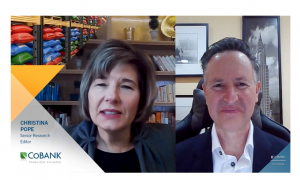U.S. rice producers and exporters stand to benefit from India’s recent decision to ban exports of white rice, as global demand for U.S. rice is expected to rise. Increased demand will temporarily lift prices for U.S. rice producers and the industry is well-positioned to meet higher demand for exports. However, the short-term benefits of India’s …
Tag: cobank
Jul 27
Persistently High Retail Prices, Soft Demand Cloud Outlook for U.S. Pork Producers
U.S. pork producers are facing an increasingly challenging economic environment that is likely to persist through the remainder of 2023. The combination of elevated operating costs and depressed hog values are evaporating producer returns and limiting overall industry growth. While hog prices have risen this summer, they have not kept pace with skyrocketing costs for …
Jul 13
U.S. Economic Slowdown Likely Ahead as Monetary Policy Actions Begin to Take Effect
The U.S. economy continues to defy gravity and remains strong despite lingering inflationary pressures, higher borrowing costs and a barrage of other headwinds. Consumers continue to spend aggressively on services, businesses are still investing and the labor market remains incredibly strong. Secure jobs are the most important element in consumer spending and well-employed Americans have …
Apr 06
CoBank Quarterly: Resilient Labor Market Delays Inevitable U.S. Economic Slowdown
Persistent inflation suggests an additional rate hike in May is likely before the Federal Reserve pauses Turmoil in the commercial banking sector over the past month has created a new and unpredictable variable in the U.S. economic outlook. For now, the situation appears to be contained and the economic impacts have been relatively modest. But …
Mar 27
3 Emerging Risks on the Horizon for the U.S. Farm Supply Sector
The outlook for agricultural retailers is generally favorable for 2023 following a year of record profits in 2022. However, the sector faces an emerging set of risks that could depress profit margins and challenge traditional business models in the years ahead. Lower levels of industry working capital, higher property insurance costs, and changing grower needs …



















